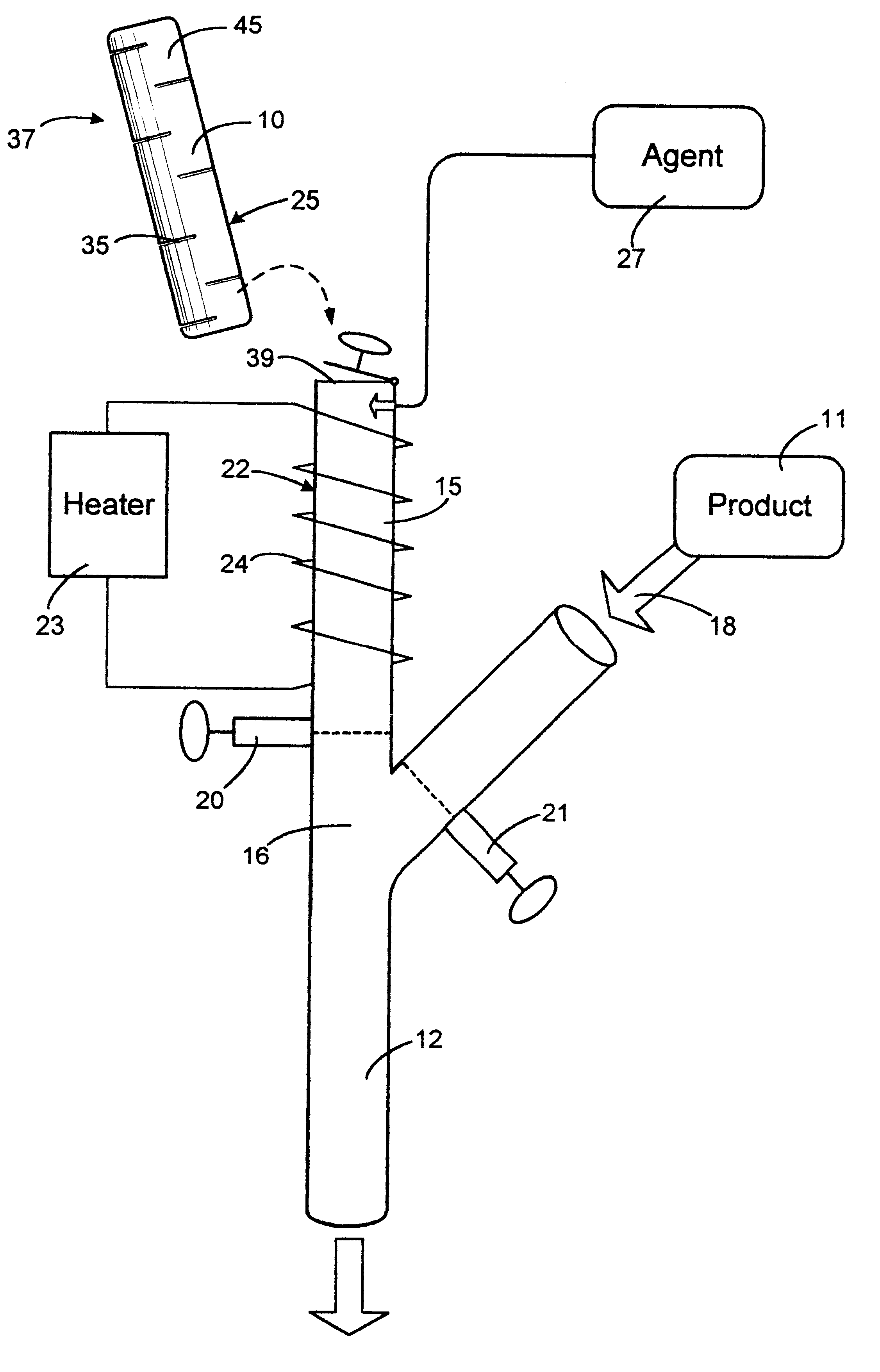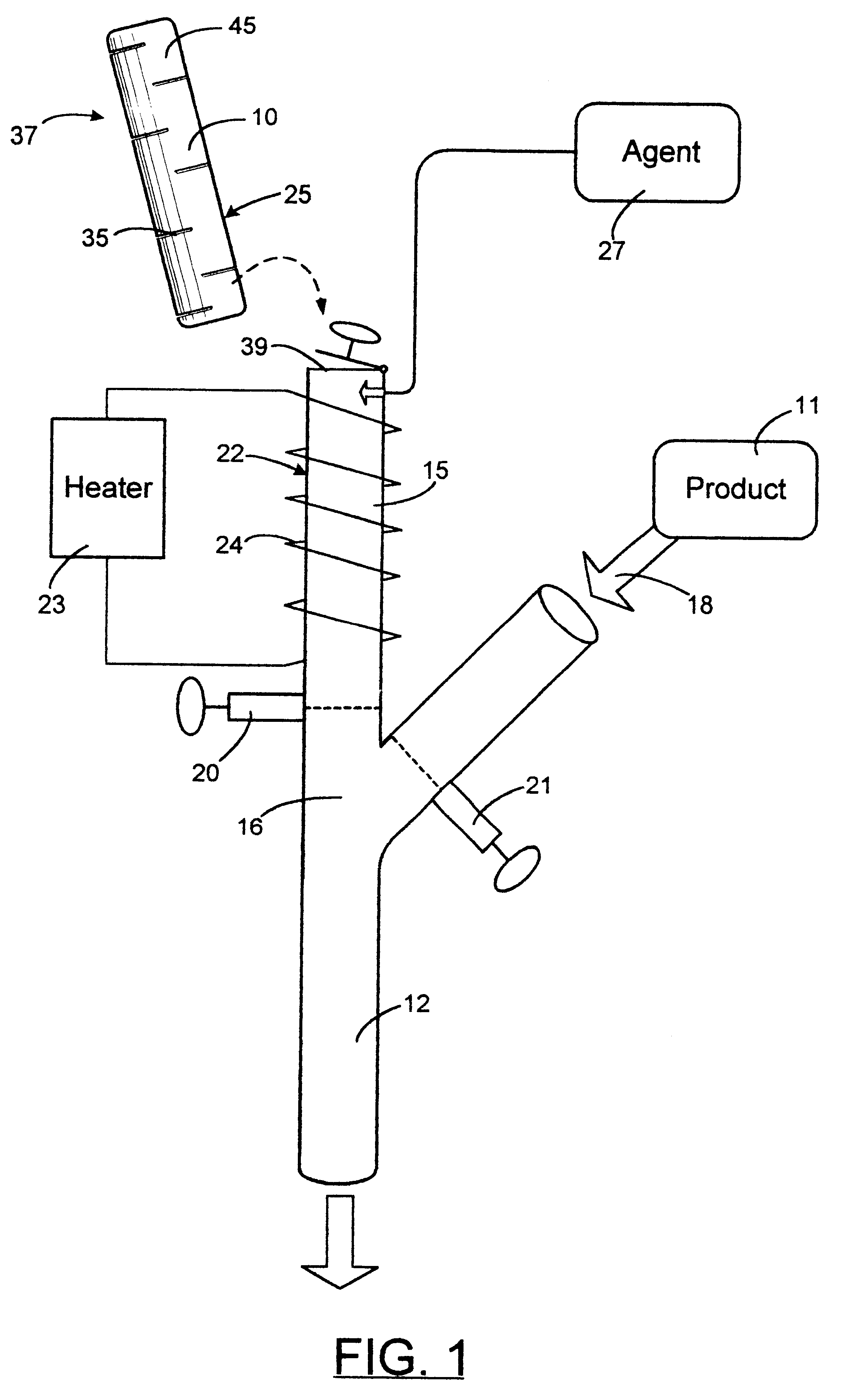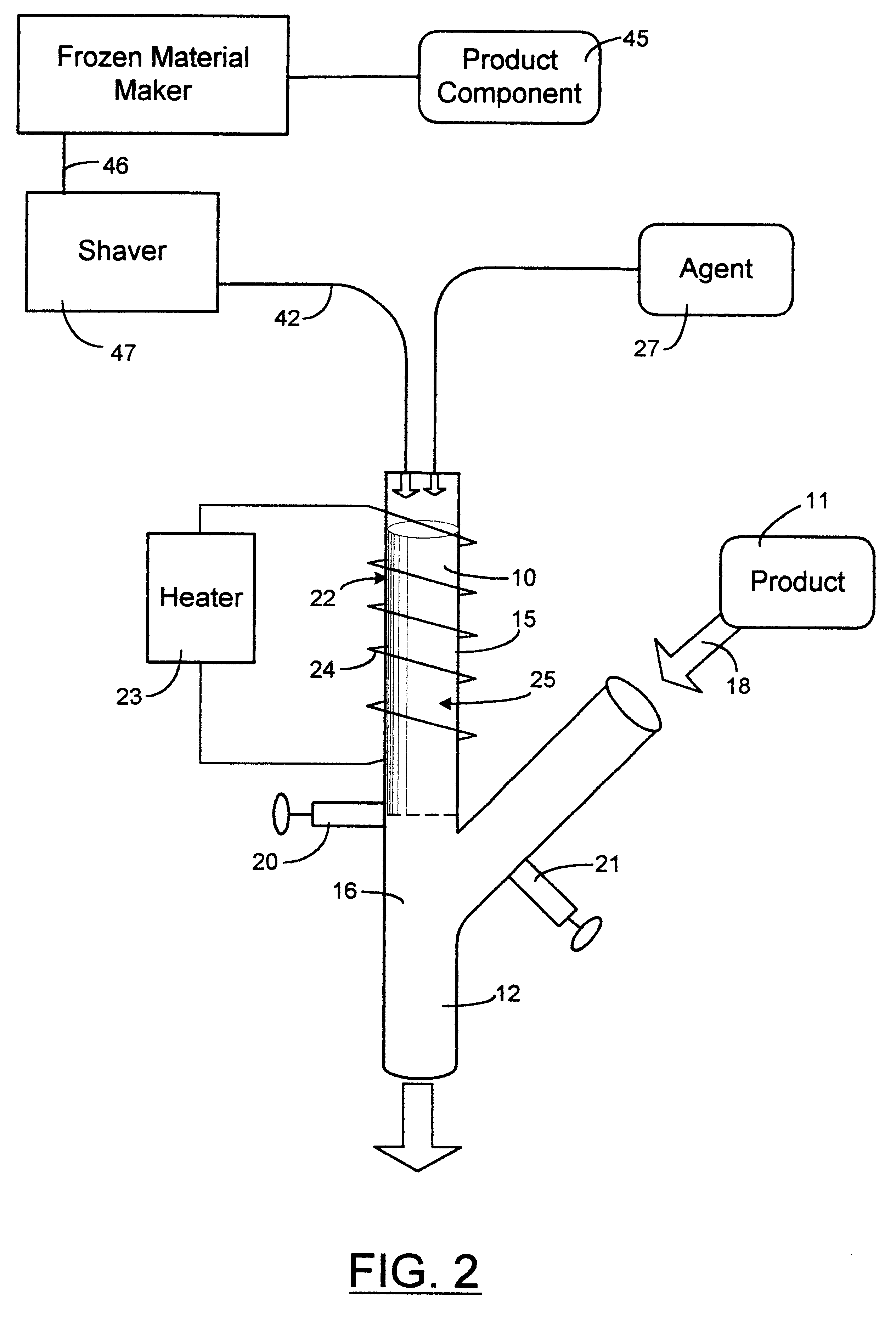Pipe pig formed of frozen product
a technology of pipe pigs and products, which is applied in the direction of cleaning processes and equipment, lighting and heating equipment, cleaning heat-transfer devices, etc., can solve the problems of significant quantity of product in the piping system becoming waste, unable to economically recover for later use, and loss of product, etc., to achieve the effect of minimizing product losses
- Summary
- Abstract
- Description
- Claims
- Application Information
AI Technical Summary
Benefits of technology
Problems solved by technology
Method used
Image
Examples
Embodiment Construction
Industrial piping systems handle a wide variety of products, such as juice, juice concentrates, carbonated beverages, wine, beer, liquid medicines, and petroleum products--to name a few. The present invention, as shown in FIGS. 1 through 4, provides a method and apparatus for purging or flushing a product from a piping system by employing a pipe pig 10. The present invention allows for the product to be recovered without dilution, mixing or contamination with another liquid material. The pipe pig can be simply referred to as a "pig." The pig of the present invention is essentially a specialized slug of material that includes at least a single component of the product stream. The pig is frozen to a substantially solid form and so can be employed to push a product 11 within a pipe 12, ahead of the pig. The pipe, as shown in FIGS. 1 through 4, is a representation of a segment of the pipe, as would be found in a piping system employing the present invention. The individual and unique di...
PUM
 Login to View More
Login to View More Abstract
Description
Claims
Application Information
 Login to View More
Login to View More - R&D
- Intellectual Property
- Life Sciences
- Materials
- Tech Scout
- Unparalleled Data Quality
- Higher Quality Content
- 60% Fewer Hallucinations
Browse by: Latest US Patents, China's latest patents, Technical Efficacy Thesaurus, Application Domain, Technology Topic, Popular Technical Reports.
© 2025 PatSnap. All rights reserved.Legal|Privacy policy|Modern Slavery Act Transparency Statement|Sitemap|About US| Contact US: help@patsnap.com



